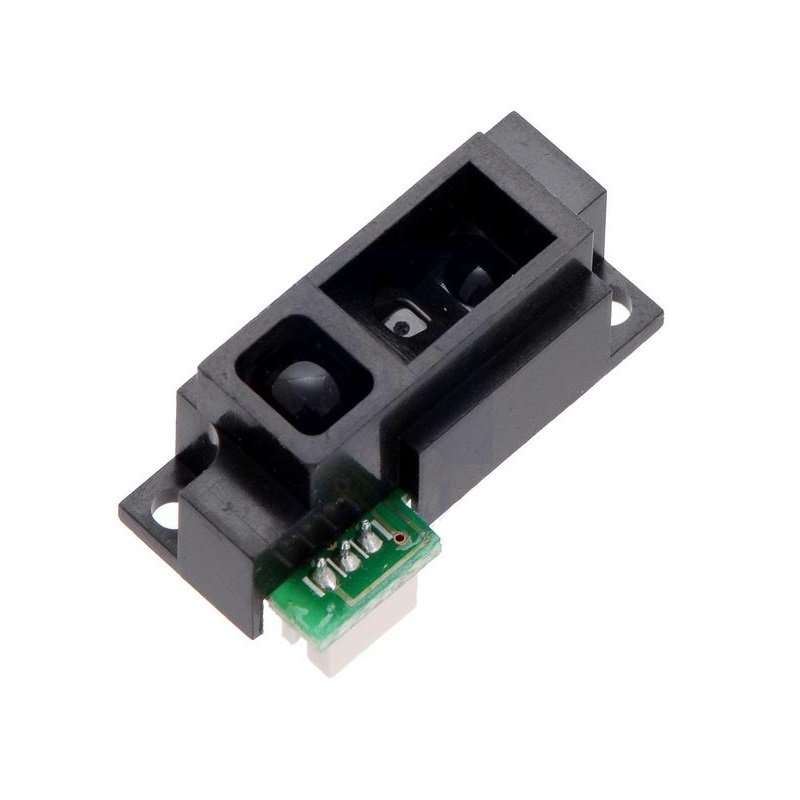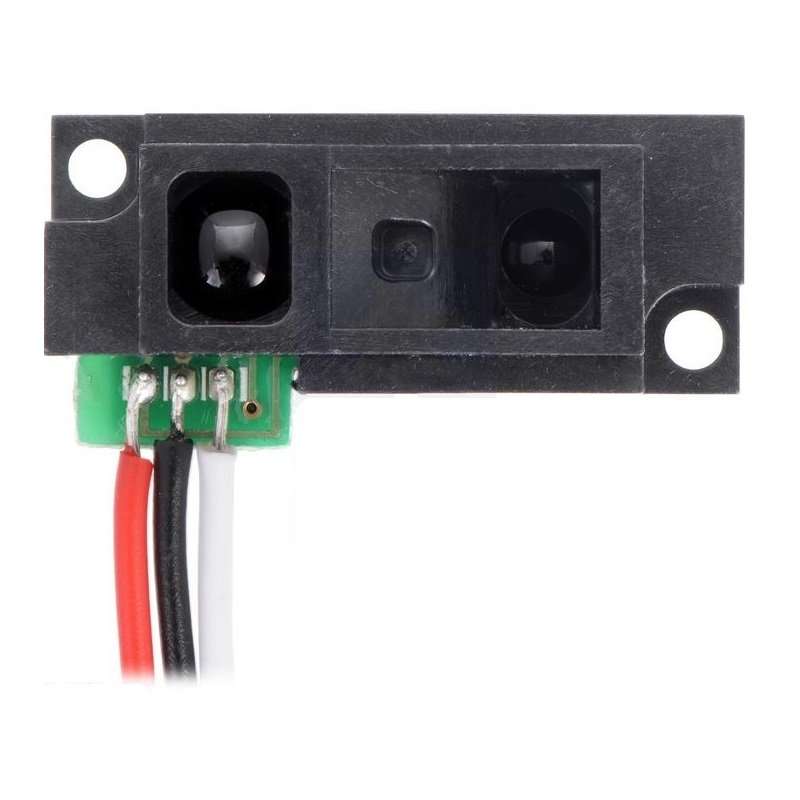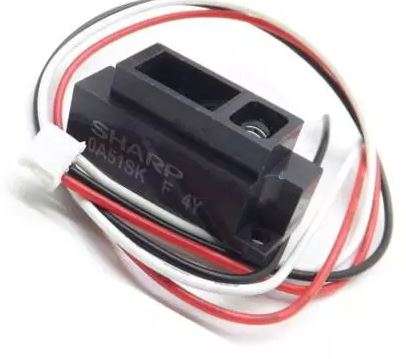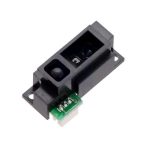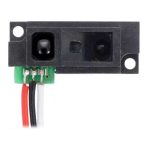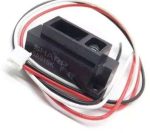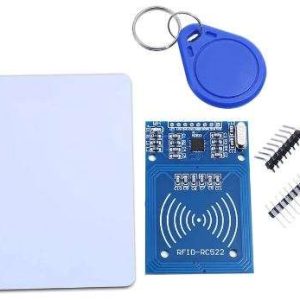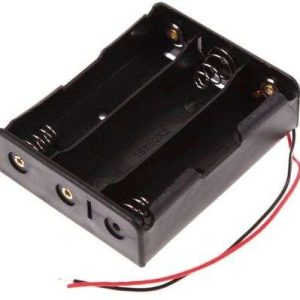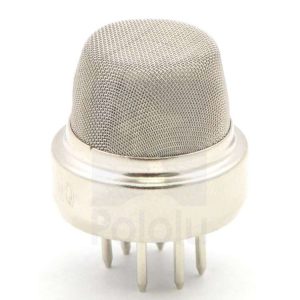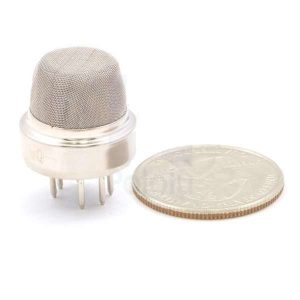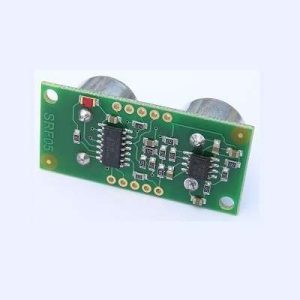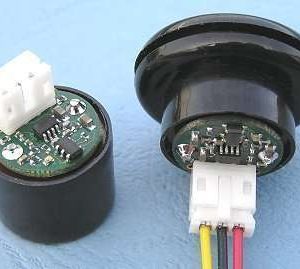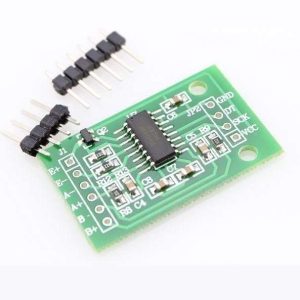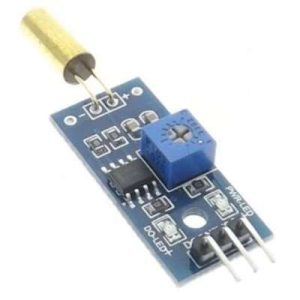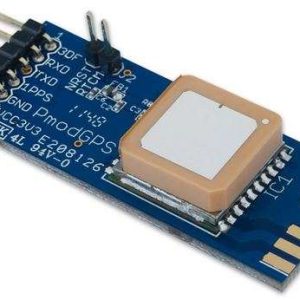The GP2Y0A51SK0F is the shortest-range Sharp analog distance sensor we carry, featuring a detection range of 0.8″ to 6″ (2 cm to 15 cm). The shorter range gives you higher resolution measurements, and the low minimum detection distance makes this sensor great for detecting very close objects. The distance is indicated by an analog voltage, making this sensor very easy to use.
Dimensions
| Size: | 1.06″ × 0.52″ × 0.56″ |
|---|---|
| Weight: | 2.7 g |
General specifications
| Maximum range: | 15 cm |
|---|---|
| Minimum range: | 2 cm |
| Sampling rate: | 60 Hz [1] |
| Minimum operating voltage: | 4.5 V |
| Maximum operating voltage: | 5.5 V |
| Supply current: | 12 mA [2] |
| Output type: | analog voltage |
| Output voltage differential: | 1.65 V [3] |
Notes
1 – Typical; can be as low as 50 Hz.
2 – Average; this sensor draws current in large, short bursts, which is why it is recommended a 10 µF capacitor or larger be placed across power and ground close to the sensor.
3 – Over the range of 2 cm to 15 cm.
Overview
The Sharp distance sensors are a popular choice for many projects that require accurate distance measurements. This IR sensor is more economical than sonar rangefinders, yet it provides much better performance than other IR alternatives. Interfacing to most microcontrollers is straightforward: the single analog output can be connected to an analog-to-digital converter for taking distance measurements, or the output can be connected to a comparator for threshold detection, making this an adjustable-threshold alternative to digital Sharp sensors. The detection range of this version is approximately 2 cm to 15 cm (0.8″ to 6″).
The GP2Y0A51 uses a 3-pin JST ZH connector that has a 1.5 mm pitch. We do not currently offer a cable that works with this connector, but it is possible to solder three wires to the sensor where the connector pins are mounted as shown in the picture to the right below (you should probably add some hot glue for strain relief as a final step; this is not show in the picture because it would obscure the soldering). Because of the narrow pitch, it helps to have a fine-tipped soldering iron, and you should be very careful not to accidentally short two pins together with your wires or any added solder. When looking at the front of the sensor, the three connections are, from left to right, power (Vcc), ground, and the output signal (Vo).
Feature summary
-
Operating voltage: 4.5 V to 5.5 V
-
Average current consumption: 12 mA (note: this sensor draws current in large, short bursts, and the manufacturer recommends putting a 10 µF capacitor or larger across power and ground close to the sensor to stabilize the power supply line)
-
Distance measuring range: 2 cm to 15 cm (0.8″ to 6″)
-
Output type: analog voltage
-
Output voltage differential over distance range: 1.65 V (typical)
-
Update period: 16.5 ± 4 ms
-
Size: 27 mm × 13.2 mm × 14.2 mm (1.06″ × 0.52″ × 0.56″)
-
Weight: 2.7 g (0.10 oz)
Linearizing the output
The relationship between the sensor’s output voltage and the inverse of the measured distance is approximately linear over the sensor’s usable range. The GP2Y0A51SK0F datasheet contains a plot of analog output voltage as a function of the inverse of distance to a reflective object. You can use this plot to convert the sensor output voltage to an approximate distance by constructing a best-fit line that relates the inverse of the output voltage (V) to distance (cm).
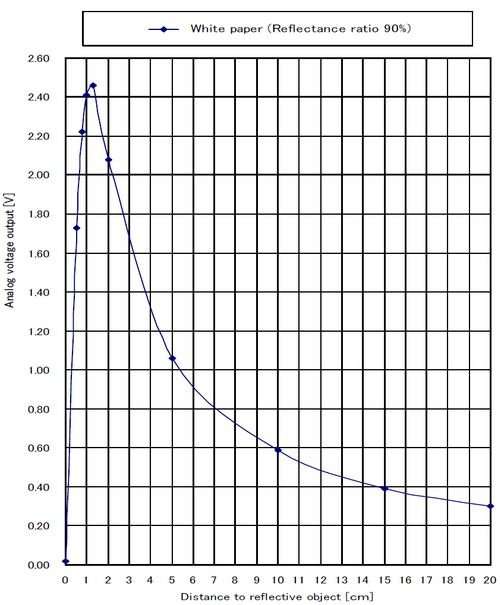
Note: The GP2Y0A51SK is different from our other Sharp analog distance sensors with JST PH connectors in two important ways: it uses a different 3-pin connector (JST ZH) that is not compatible with our JST PH cables or 0.1″ connectors, and the mounting holes are in different locations, so it is not compatible with our brackets for Sharp distance sensors. Like with most of the other Sharp distance sensors we carry, the manufacturer recommends you insert a bypass capacitor of 10 µF or more between Vcc and GND near this sensor to stabilize the power supply line.

